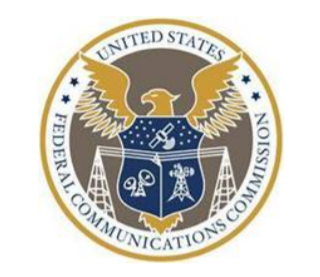UPDATE Scientific think tank, Environmental Health Trust (EHT), recently filed what it says is a landmark principal brief in the U.S. Court of Appeals against the FCC. Citing the Commission’s 24-year old standard for RF radiation (RFR) limits, EHT’s appeal is aimed at getting the Commission to update its safety limits for human exposure.
EHT’s brief claims the agency violated multiple protection acts in December 2019, when it stated the exposure limits adequately support public and environmental safety now and for the future.
Tracing back to 2012, the Government Accountability Office issued a report declaring a need for exposure limits to be reviewed according to current science. In response, the FCC issued an inquiry into the appropriateness of its recommended limits.
A group of scientists and medical professionals, unvetted but globally distributed, responded to the inquiry with peer-reviewed studies showing “RFR is deeply harmful to people and the environment and is linked to cancer, reproductive harm, and other biological ills to humans, animals, and plants.” According to EHT, the agency ignored the submitted evidence of this claim.
“Our published research sent to the FCC concludes that radiofrequency radiation is an established human carcinogen. Yet FCC limits do not protect against cancer nor any other disease,” stated Dr. Anthony Miller, Professor Emeritus at the Dalla Lana School of Public Health, University of Toronto and former Director of the Epidemiology Unit of the National Cancer Institute of Canada. “The FCC’s so called ‘safety’ limits are based on decades old science that only investigated short-term effects. Those limits are based on the proven false and erroneous assumption that heat is the only harm from radiofrequency microwave radiation.”
According to Theodora Scarato, Executive Director of EHT, the FCC’s 2019 claim that exposure limits are adequate also fails to protect children. “The FCC entirely ignored the recommendations of the American Academy of Pediatrics, hundreds of scientists and over 30 medical and public health organizations. Wireless emission limits should protect children who will have a lifetime of exposure,” said Scarato.
Regarding environmental protection, Devra Davis PhD, MPH, who leads EHT, pointed out there was a noticeable absence of on-the-record comments by the EPA.
“Equally shocking is how the FCC could state that the existing limits which were developed in 1996, are protective without even addressing the impact of the existing limits on the natural environment,” said Davis. “There is a great deal of evidence in the FCC proceeding showing that radiofrequency radiation is harmful to birds, bees and trees.”
The brief contends the following violations: the Administrative Procedure Act because its order is arbitrary and capricious, and not evidence-based; the National Environmental Policy Act because the FCC did not take a hard look on the environmental impacts of its decision; and the 1996 Telecommunications Act because the FCC failed, as required by the Act, to consider the impact of its decision on the public health and safety.
Last August, the agency retained the limits. At the time, officials said after more than six years of public input and review, America’s RF exposure limits for handheld devices are among the most strict worldwide for cell phones. The Commission believes they reflect the best available information concerning safe levels of RF exposure for workers and members of the general public, including inputs from sister federal agencies charged with regulating safety and health and from well-established international standards.
At the time, Wireless Infrastructure Association President/CEO Jonathan Adelstein told Inside Towers: “Decisions like these are best left to federal health agencies, who are most qualified to make these determinations. I’m not surprised that the limits didn’t change because physics hasn’t changed since the rules were last established.” He thanked agency personnel who relied on federal and world health experts and extensively studied this issue. “There is tangible evidence every day that wireless saves lives and protects people in emergencies. I am confident the Commission will continue to make the best decisions for safety and well-being of the American people,” explained Adelstein.





Reader Interactions